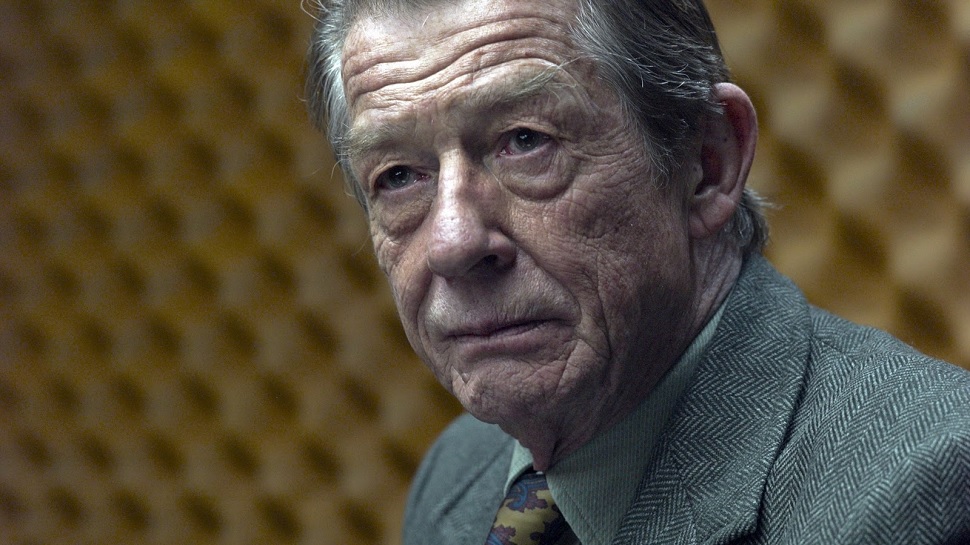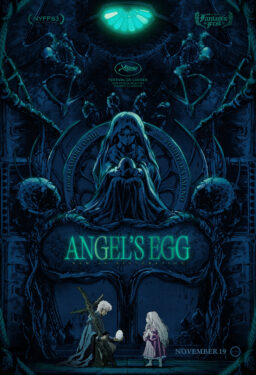Actors rise and fall on the national scene. They have their moments, and then they move out of the spotlight. Few actors in the history of film had the longevity of John Hurt, who passed today at the age of 77. For me, he was just always there. From the first time I saw “Alien,” to watching his fantastic scenes in the Oscar-nominated “Jackie,” he was a consistent part of the film scene. And it wasn’t just an act of survival, but one of range. He could appear in something as minor as a TV mini-series like “The Last Panthers” last year or as major as the “Harry Potter” franchise. It felt as if fame never motivated him, and that he would consistently elevate everything in which he chose to appear. There were actors who got more attention, but few were as consistently excellent as John Hurt.
He was born in Derbyshire in 1940. His father became the vicar of St. Stephen’s Church in Woodville when John was only five—a fact that may explain the depth of Hurt’s brief role as a religious leader counseling Jackie Kennedy in last year’s “Jackie.” He developed his love of acting at local religious schools, appearing in his first film, “The Wild and the Willing” in 1962. His breakthrough would come a few years later as Richard Rich in “A Man For All Seasons.” After that, there was no looking back. In 1971, he landed his first BAFTA nomination for “10 Rillington Place,” and he turned heads as Caligula in “I, Claudius” a year later.
His first world-renowned role would come in 1978 with “Midnight Express.” He played Max, an English heroin addict who befriends an American imprisoned on drug charges, joins him in an escape attempt, and is left behind by him in a wrenching goodbye scene. Hurt won a Golden Globe and a BAFTA for his performance as Max and was nominated for his first Academy Award.
A year later, he would appear in the role for which he will likely be most remembered, Kane in Ridley Scott’s “Alien.” The stories about the infamous scene in which a chest-burster popped out of Hurt’s stomach are plentiful, including the fact that Hurt’s co-stars didn’t really know what was going to happen in that key moment, but the fact is that the moment is movie history, as influential as almost any individual scene from the period. The image of Hurt on his back on the table, choking and spitting up blood after thinking he’d awakened from a nightmare and that only blue skies lay ahead, found the humanity in what might have otherwise been a merely gory shock effect. Hurt’s face didn’t seem just scared and pained, but existentially betrayed. Like the indelible image of Janet Leigh holding up her hand against a murderer’s blade in the shower scene of “Psycho,” it’s not just one of the most shocking deaths in movie history, but an emblematic image that stands in for the totality of the film built around it.
John Hurt continued to appear in major films in the ‘80s, especially his turn in David Lynch’s “The Elephant Man” in 1980, which earned him another Oscar nomination, and a BAFTA win. From there, his resume is as strong as any actor’s to appear in film over the last four decades. He was wildly unpredictable, appearing in films as different as Sam Peckinpah’s “The Osterman Weekend,” the adaptation of George Orwell’s “1984,” Jim Sheridan’s “The Field,” and Robert Zemeckis’ “Contact.”
In the last two decades, Hurt was as busy as ever, appearing in the “Harry Potter” franchise, “V For Vendetta,” “Indiana Jones and the Kingdom of the Crystal Skull” (an alternately comic and cosmic turn that partly redeems the film’s soggiest section); “Rob Roy,” “Dead Man,” “Hellboy,” “Melancholia,” “Tinker Tailor Soldier Spy” (appropriately cast as “Control,” British intelligence’s supreme puppet master); “Snowpiercer,” and dozens more. If you’re looking for an underrated and under-seen turn by Hurt, track down the great “Love and Death on Long Island,” a modern suburban cousin of “Death in Venice,” starring Hurt as Giles De’Ath, an English writer and Luddite who falls for a man forty years his junior.
Why do some stars keep burning while others fade away? There was a sense of commitment in everything that John Hurt did, from major films to material that went straight to DVD. He always found a core of tactile humanity even in parts that were little more than exposition delivery devices. That commitment to craft led to the kind of career that any actor would covet.
John Hurt told The Telegraph in 2009, “I’d love to claim that what I have done in my life is of my doing; but it’s not my doing at all. I’ve blown around in the wind like a mad thing; influenced by this and that—like a piece of paper, like the boy in that scene in ‘American Beauty’ watching a piece of paper blowing hither and thither. That’s a wonderful image, isn’t it?” Of course, Hurt was being a bit self-deprecating, but it’s a quote that captures his career, unpredictably moving from project to project, bringing his all to each and refusing to be defined by any of them. Film won’t be the same without him.












